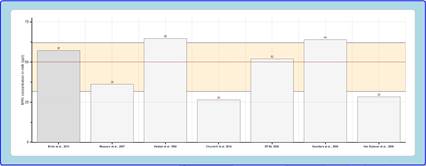

Since Aflatoxin B1 (AFB1) in feed can be transferred into the milk as Aflatoxin M1 (AFM1), dairy cattle will produce milk contaminated with AFM1 after consuming feeds contaminated with AFB1. For this reason, the carry-over of AFB1 from contaminated feed into milk is of special interest and the AFMI concentration in milk is regulated by law in many countries.
Once AFM1exceeds the regulatory limits (Table. 1), the AFM1 contaminated milk, by law, has to be discarded to prevent it from getting back into the food chain. AFM1 contamination in milk occurs often (not always above regulatory limits) because AFB1 often occurs naturally in grains, by-products, and roughage.
Table 1: Global regulation of aflatoxin M1 (AFM1) in milk
|
Countries |
AFM1 Concentration in Milk | |
|
EU Countries |
Less than 0.05 ppb (50 ppt) | |
|
USA, Canada, China, Japan, Mexico, etc. |
Less than 0.5 ppb (500 ppt) | |
The NDS Mycotoxins Evaluator includes a special section able to foreseen whether the current levels on Aflatoxin B1 in feed for lactating animals is sufficient to keep Aflatoxin M1 levels in milk below the thresholds as reported in Table 1.
We adopted the model proposed by Britzi et al. (2013) in which the carry-over appears to increase exponentially with milk yield. It seems to well describe the conditions of high-production cows that will a higher carry-over percentage when compared with that has been suggested by previous studies using low-producing cows.
However, the expected value is compared with predictions made by other published models, in order to evaluate the sensitivity of the proposed data.


This approach should be of help to detect risky situations with the resulting possible decisions that can be made, which may include the substitution of contaminated feeds or the addition of mycotoxin binders to contaminated diets with the goal to reduce the effects of mycotoxins.
NDS Mycotoxins Evaluator should make farmers and nutritionists more sensitive towards a proper harvesting, storing, and regular testing of feedstuffs for dairy cows to ensure the safety of the animals and the humans consuming their products.